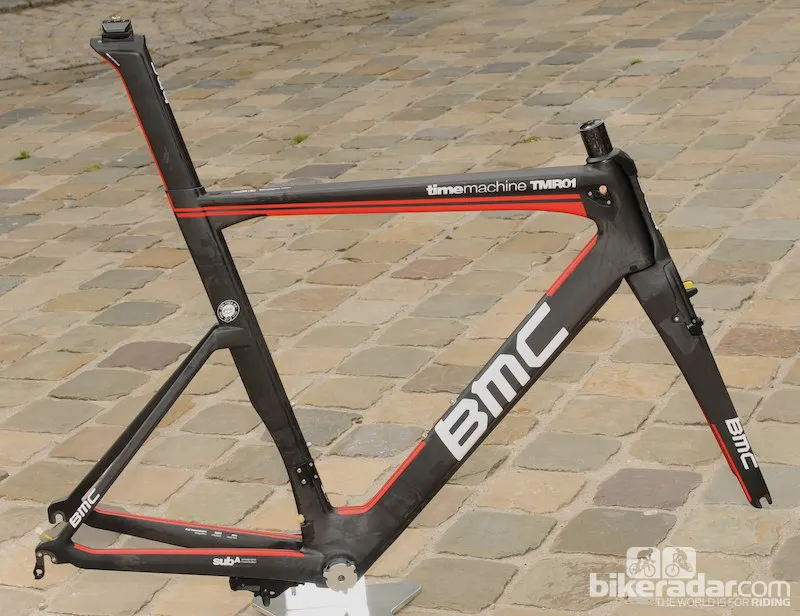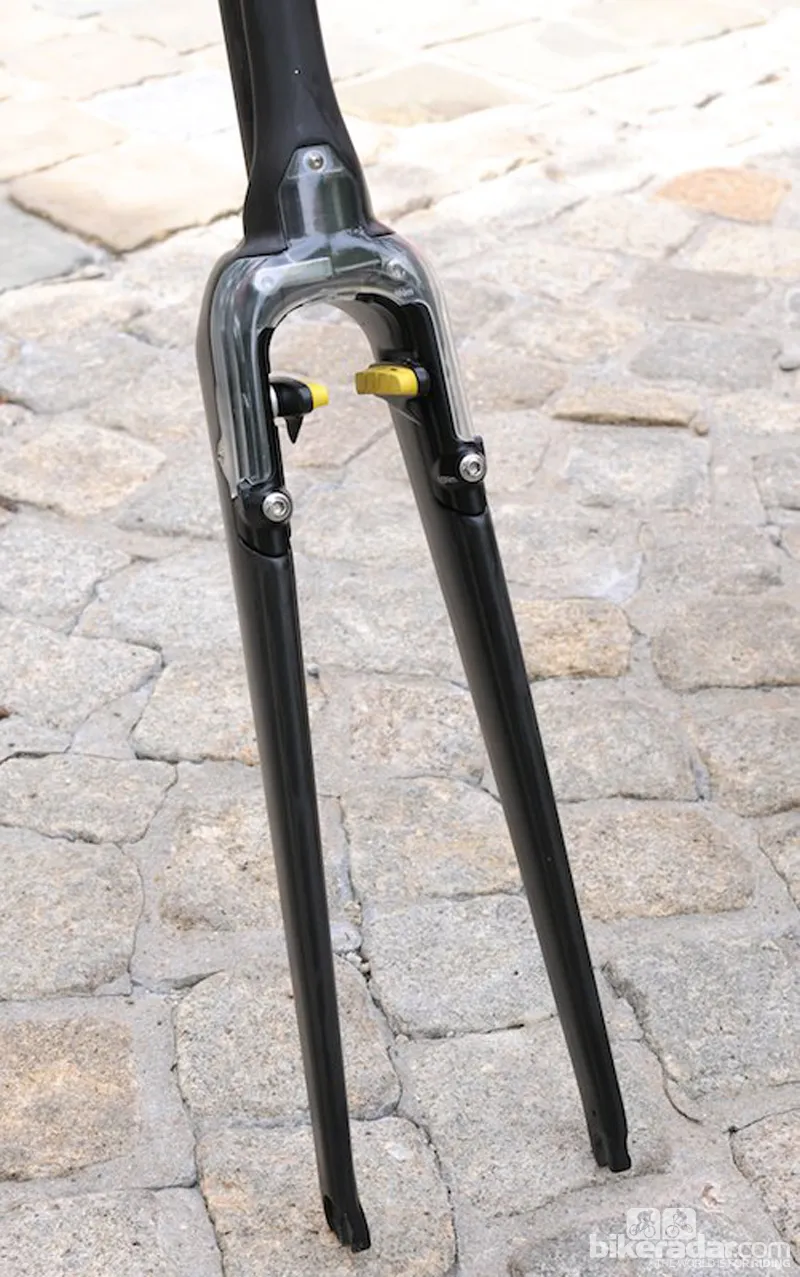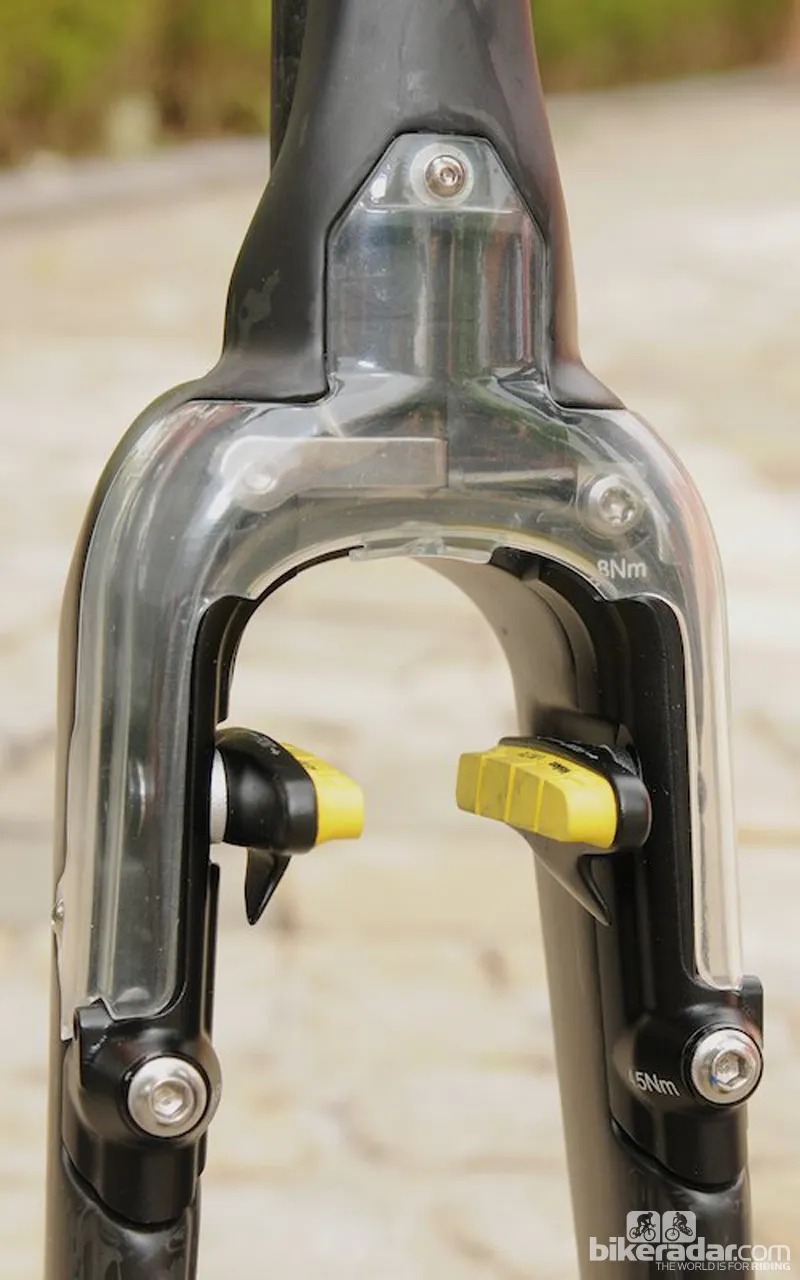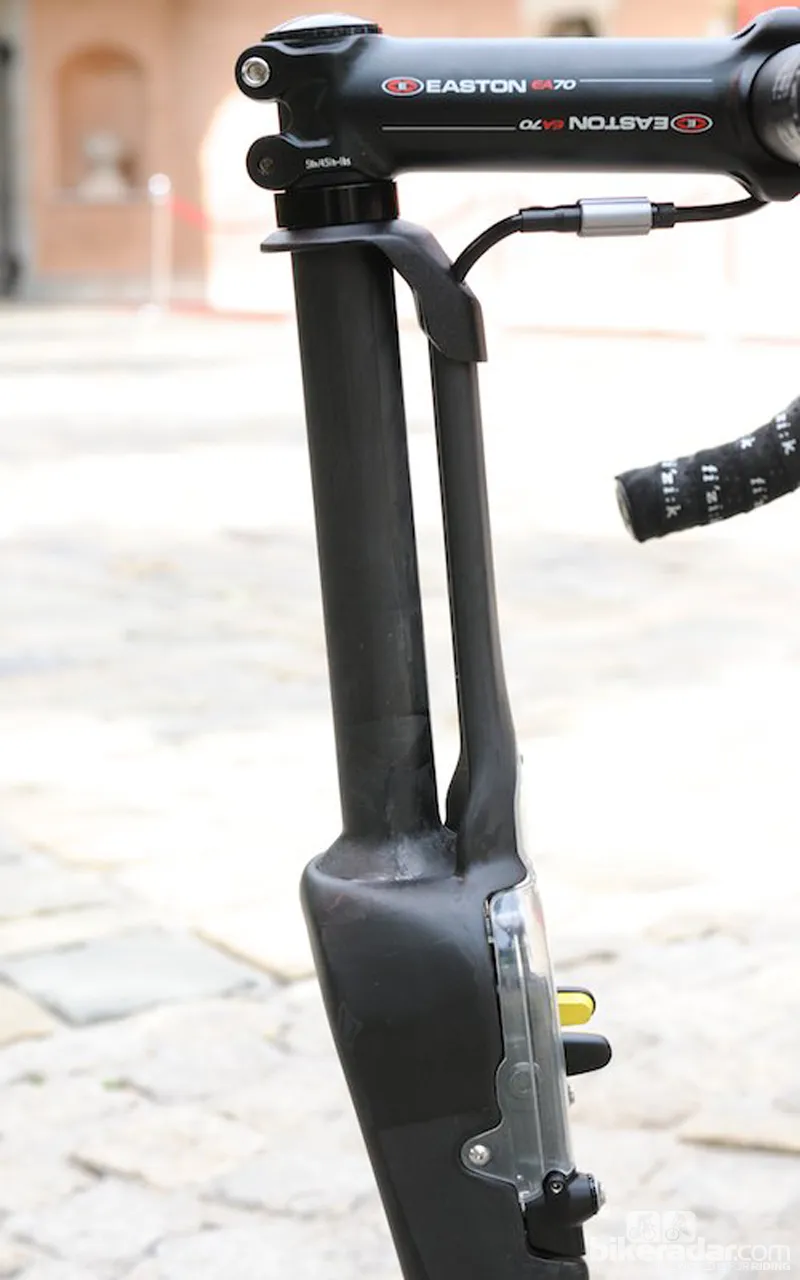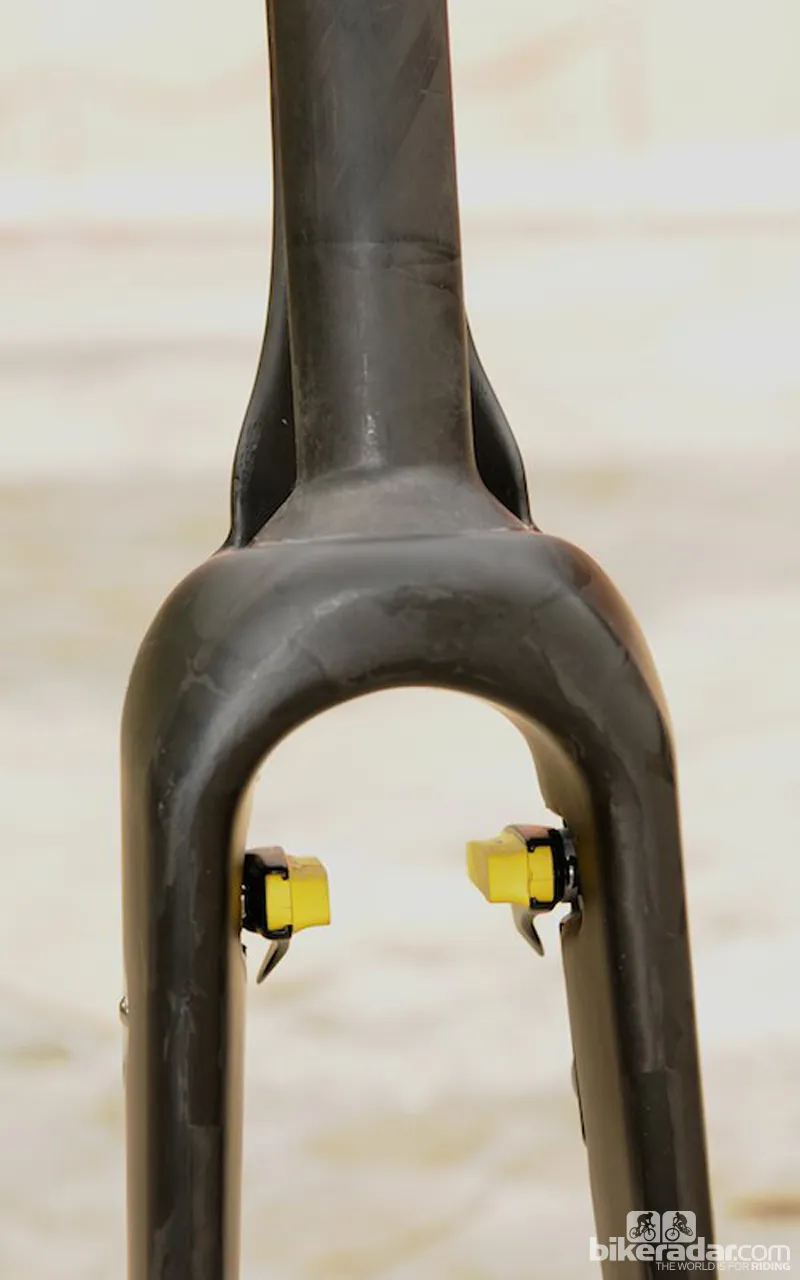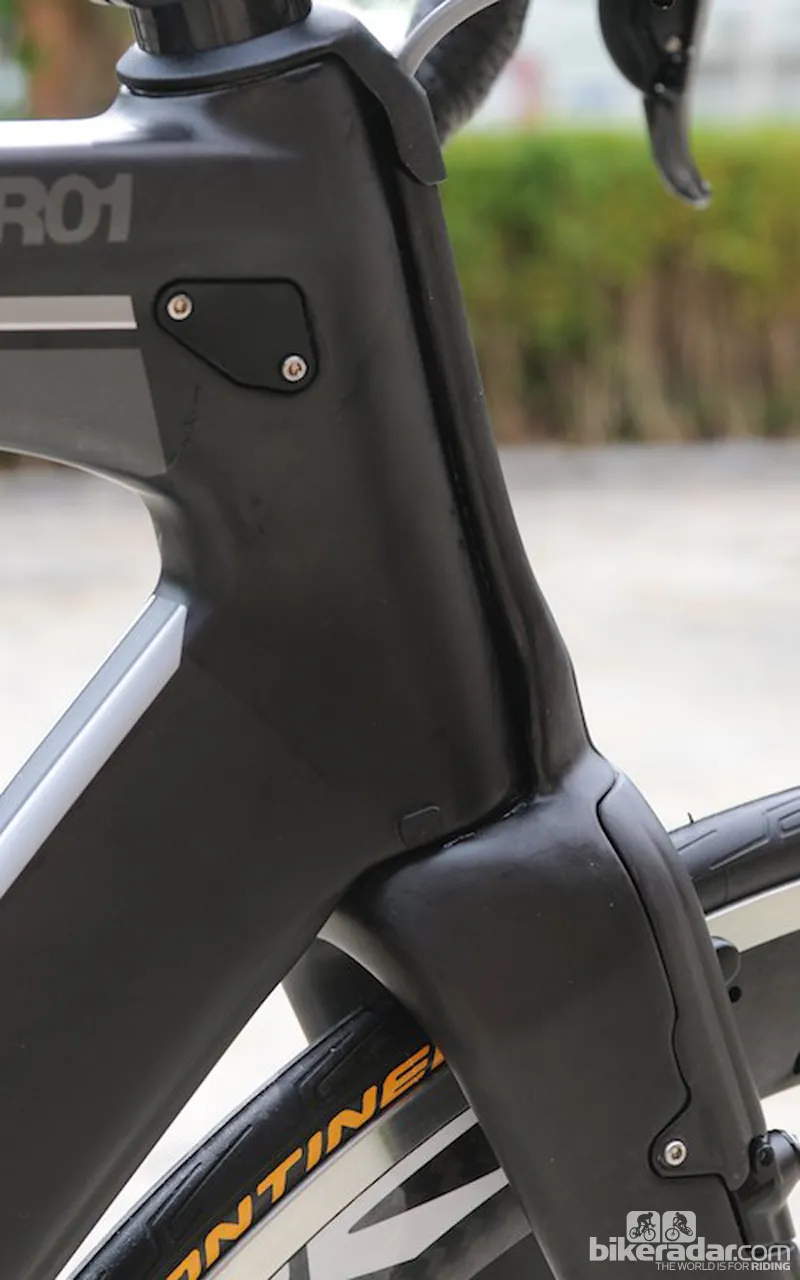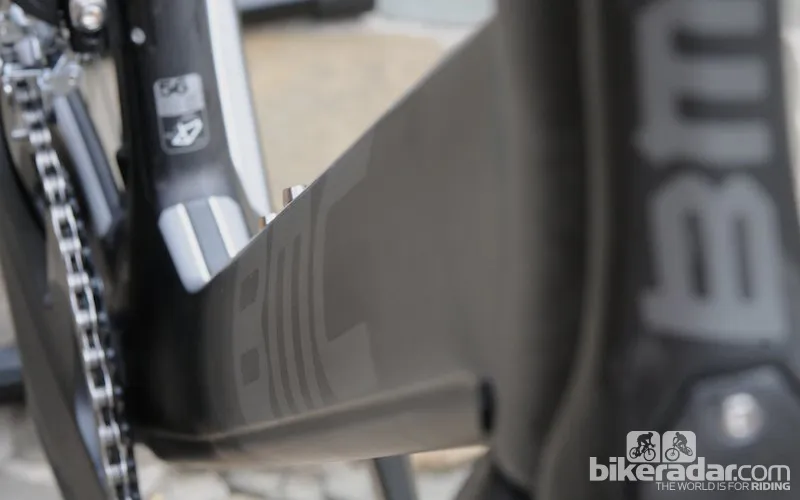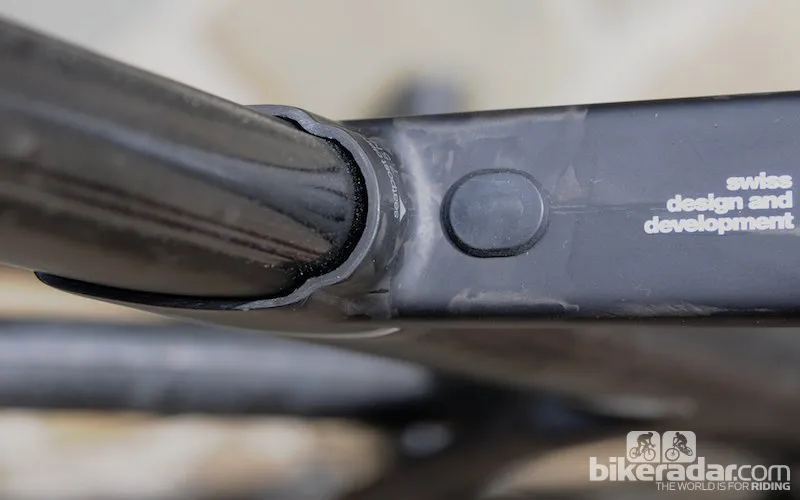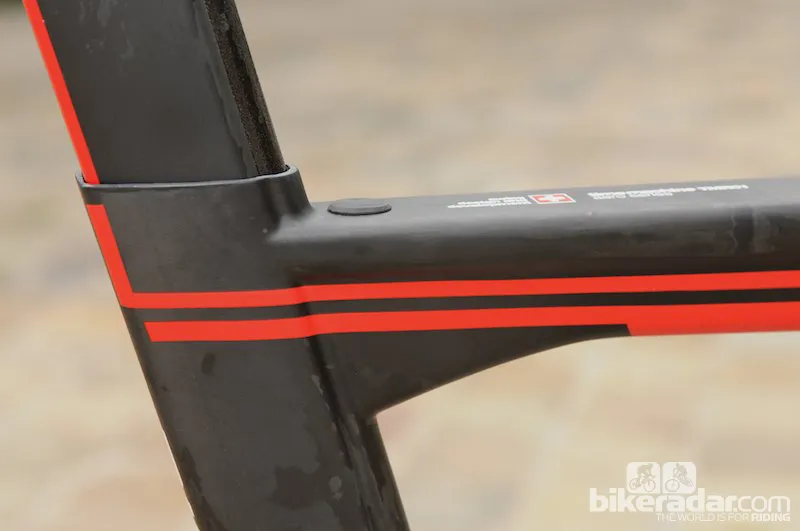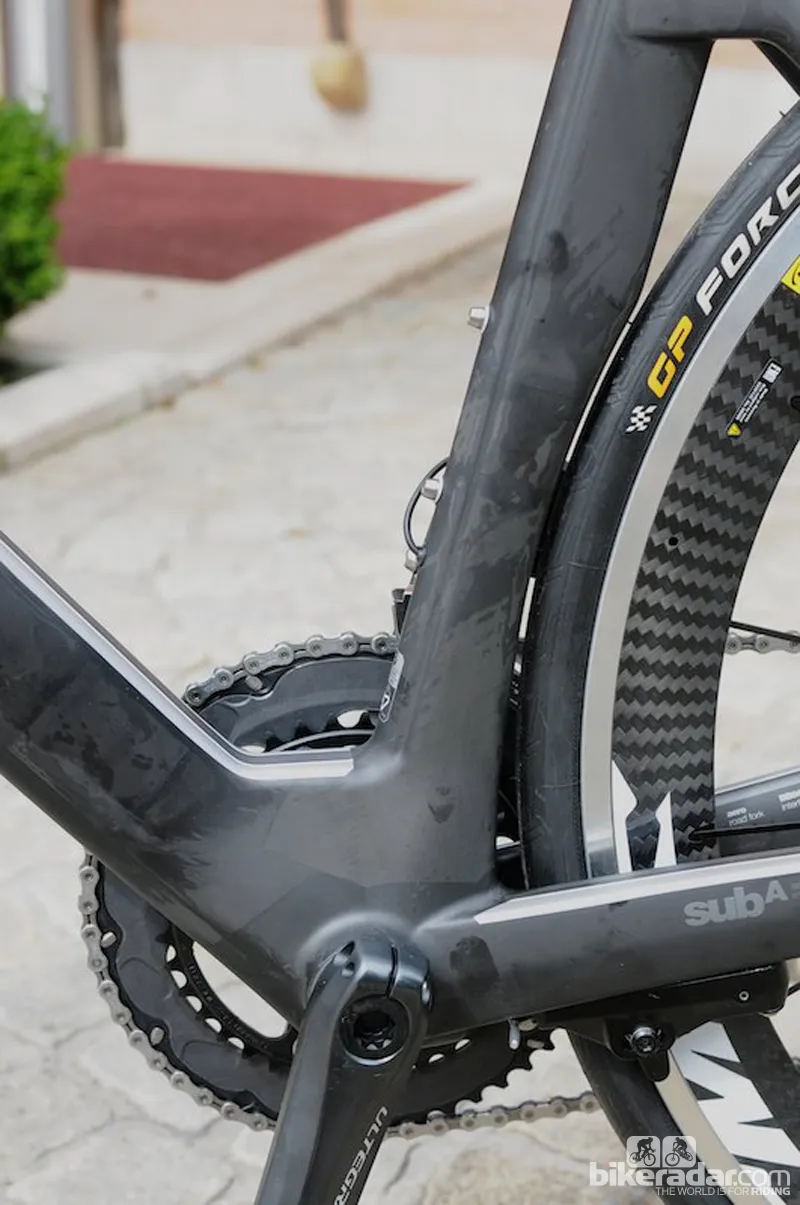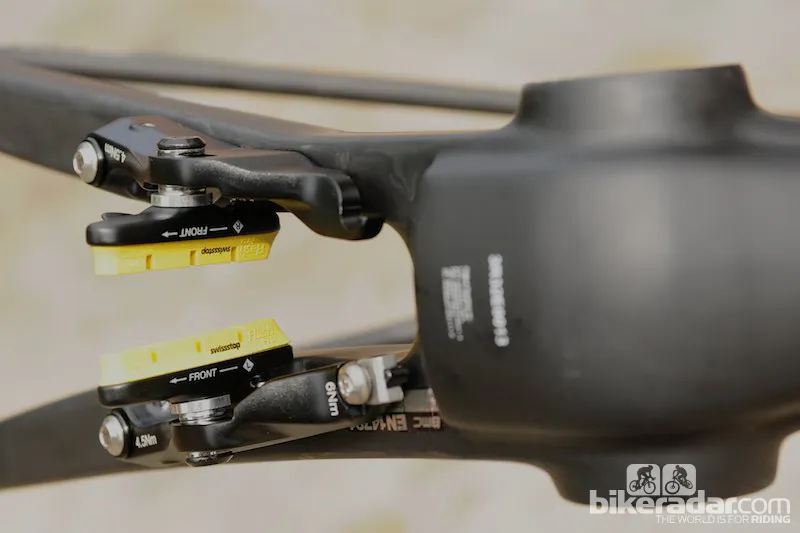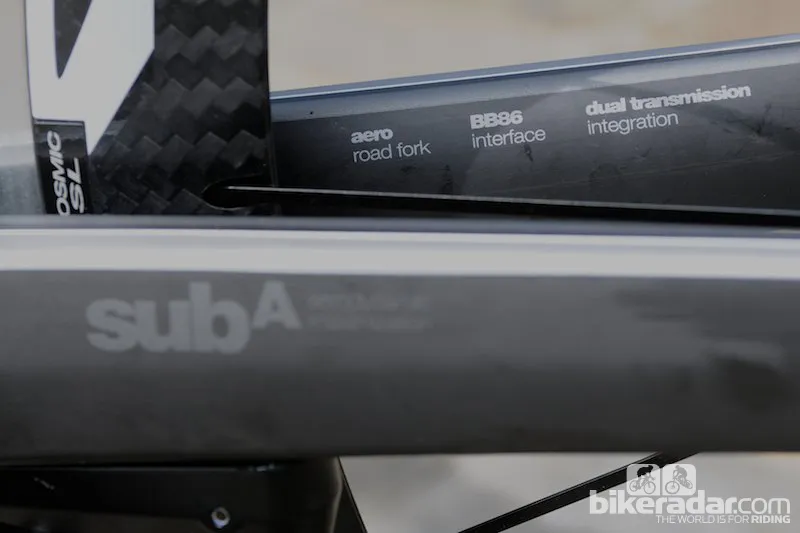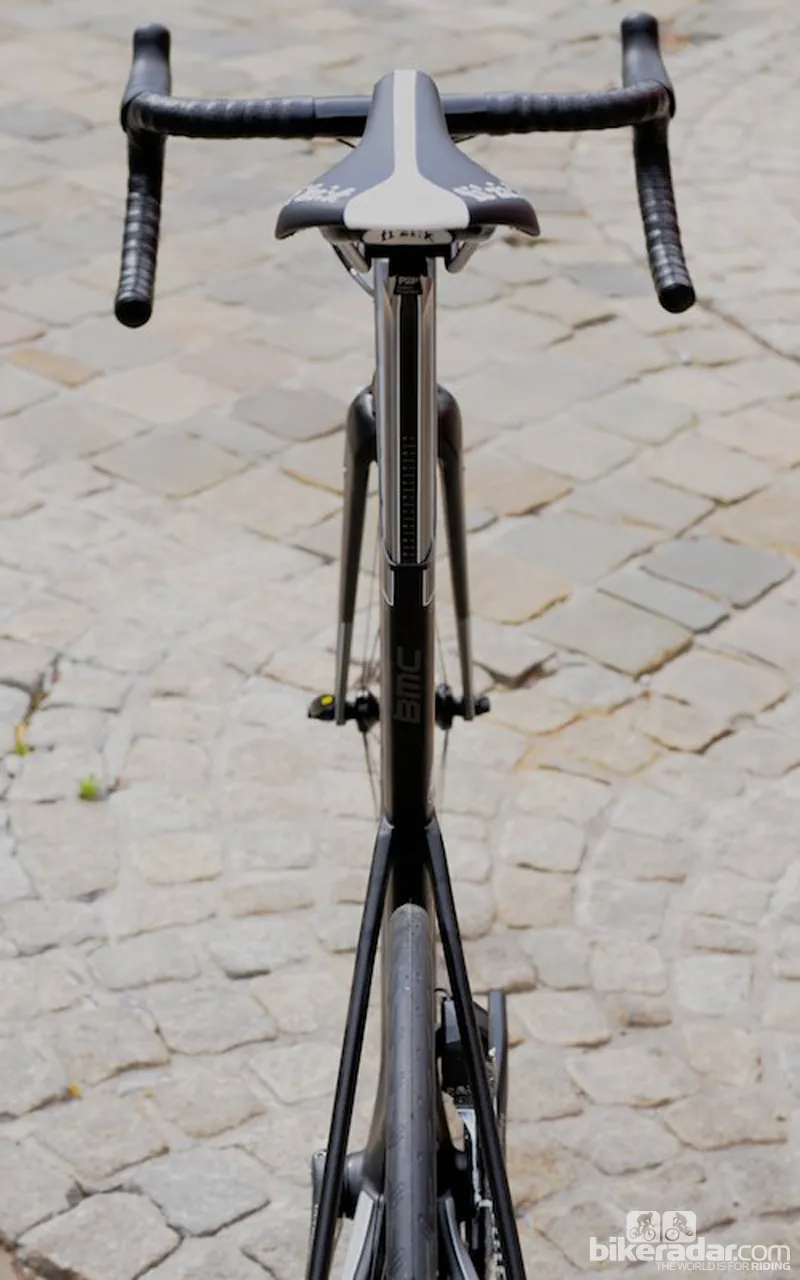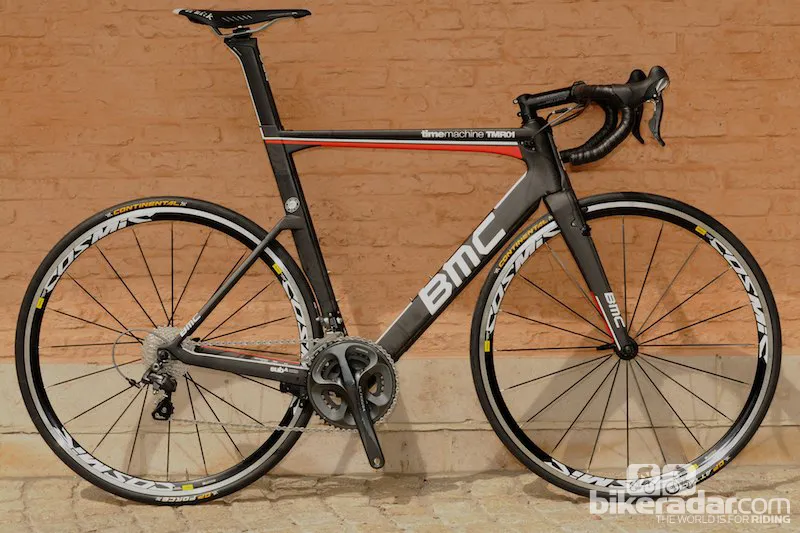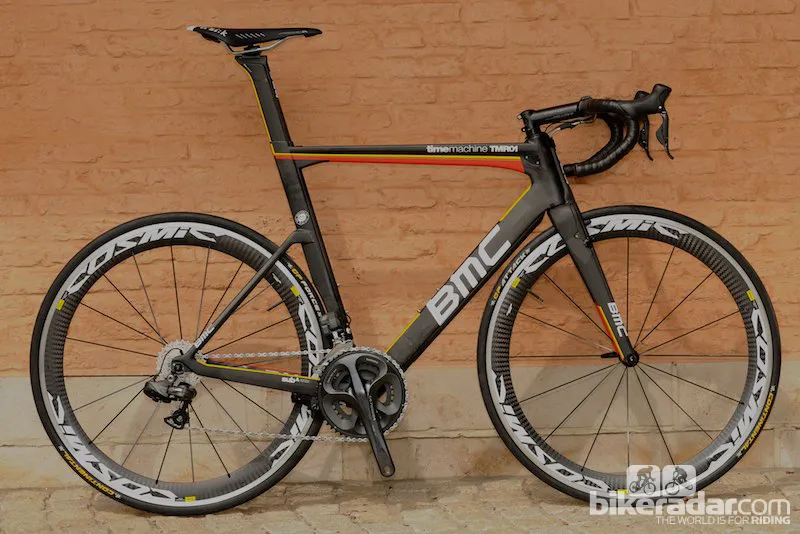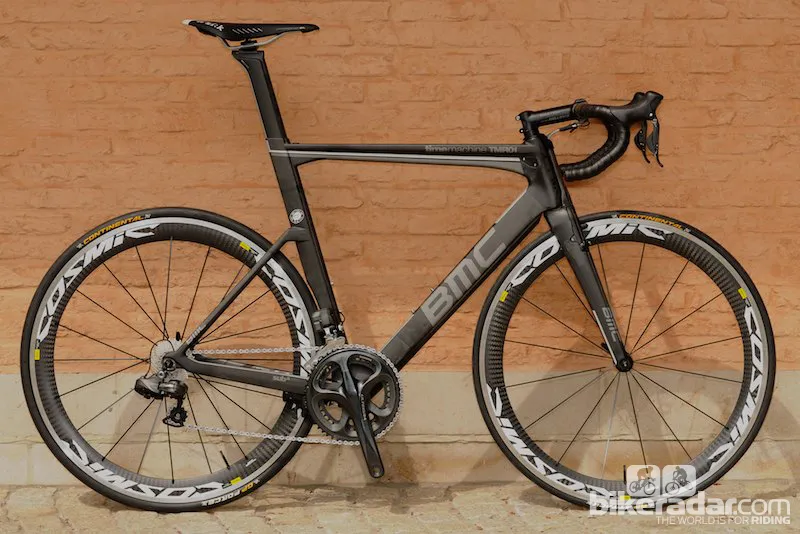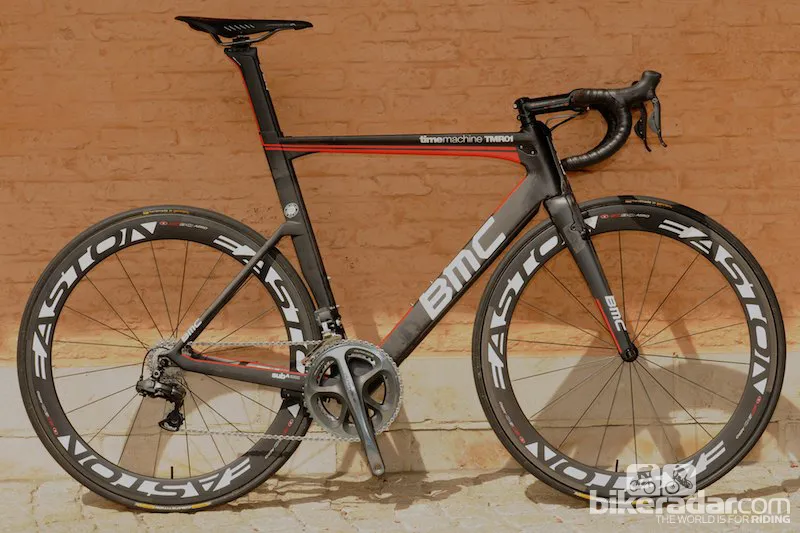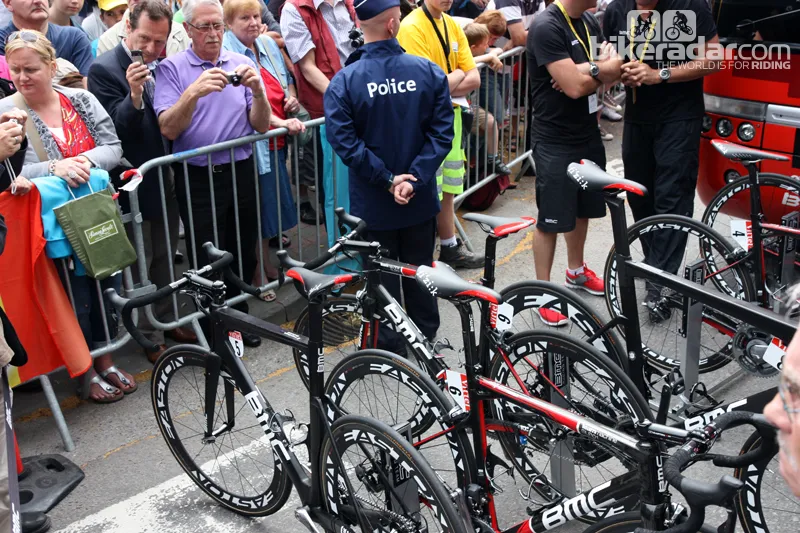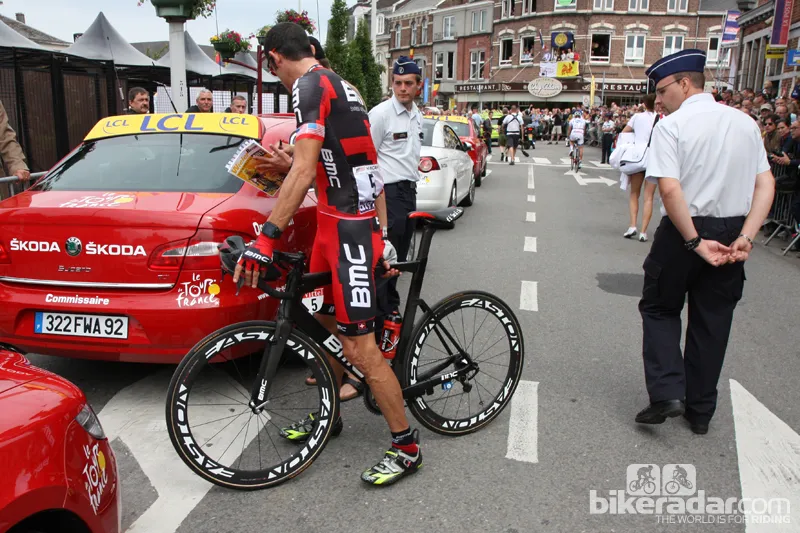From local Swiss company to Tour de France winners, BMC’s rise has been rapid. Without a road bike in their range in 2001, this week BMC launched their second road machine this year.
As the only road bike brand who own their own professional team, BMC have the ultimate research and development facility.
With April’s GF01 fulfilling the role of Endurance Road Bike, the TMR01 is the newest element of the Aero Series.
Rather than just taking elements from last year’s TM01 time trial bike to make a wind-cheating machine, BMC’s aims were for a bike that could equally benefit sprinters, rouleurs and triathletes, and so needed to not only be aerodynamically efficient, but also responsive and highly adjustable to offer the best fit.
The Sub A concept reduces frontal area, but maximises stiffness for improved cornering; and to reduce drag, BMC have used the Tripwire tubing design from the TM01. The truncated wing profile has a stepped leading edge, which BMC says creates a turbulent boundary layer of air in the way that a golf ball’s dimples do, and reduces drag behind it.

A traditional aero shape in red, compared to BMC's tube shape in white. The black section demonstrates the 'removed' area
To improve air layer separation as it leaves the tube, BMC truncated the tube, removing its tail from the wake, and satisfying the UCI tube ratio rules at the same time. The design is used on the leading edges of the fork, down and seat tubes.
Key aims for the TMR01 were to have fully integrated brakes, fork, Di2 battery, cables, seat clamp and seatpost. As on the TM01 the brakes are essentially small V-brakes, but differ this time in having easily accessible tension adjusting bolts and a new Shimano in line quick release lever that sits flush under the stem, and can be flicked open fast. Production delays mean that the bikes pictured are conventionally cabled, but any sold this way will be retrofitted with the quick release system when available. The brakes open to 32mm, which will permit usage of the widest road rims if desired.
The hinge fork design has a 1.25in lower steerer tube diameter, with a UCI legal cable cover shrouding the front brake cable extending the fork’s front edge parallel with the head tube, and attaching via a collar above it. The seatpost has a Tripwire leading edge, comes in three offsets (0, 15 and 30mm), and is secured with the same internal double wedge design as the TM01, leaving no bolt or clamp in the wind.
The new cylindrical Shimano Di2 battery fits inside the seat tube, and can be charged without removal. However, delivery is delayed until 2013, so all bikes will be supplied with the current battery fitted low under the base of the down tube, and replaced with the new battery when possible, BMC says.
DTi integrated ports allow for flexibility with cable routing. For example, Cadel Evans runs his brakes in the common UK and Aussie configuration, unlike the rest of his BMC teammates. It also means that the TMR01 is compatible with every gear system currently on the market.
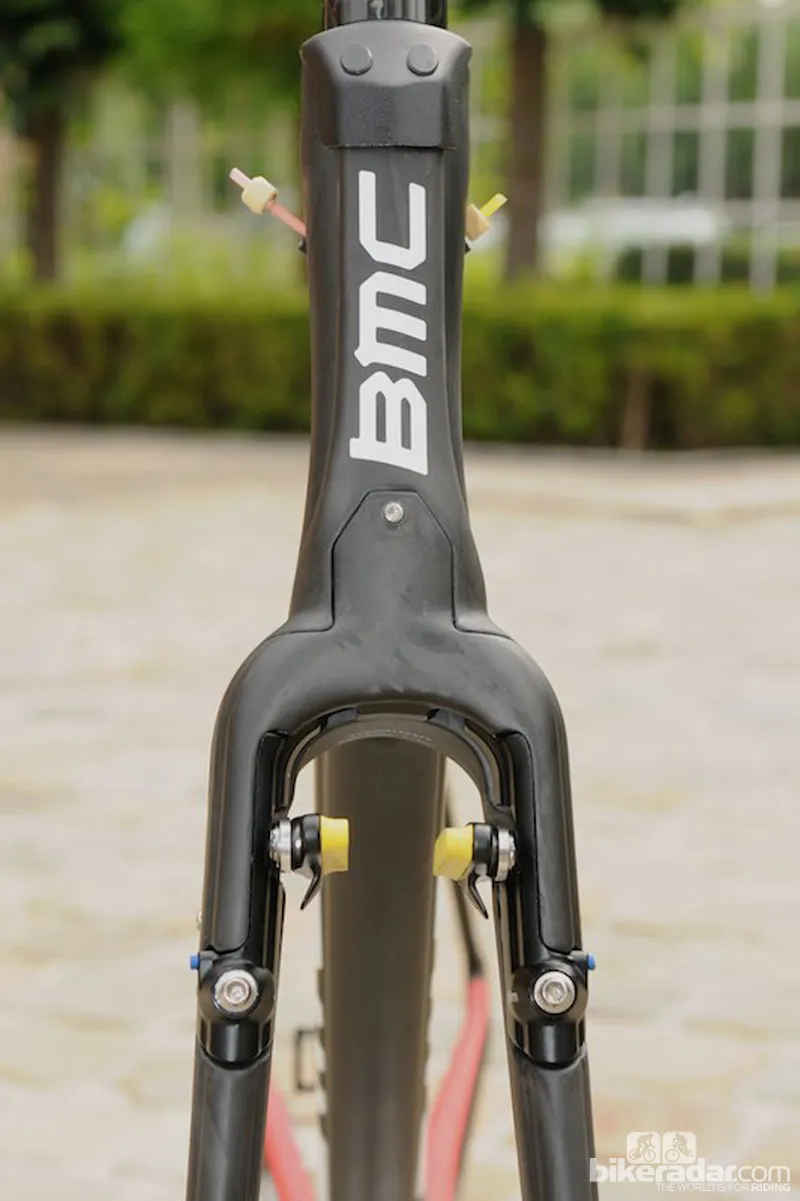
The front view of the TMR01 (minus the front wheel)
BMC carried out wind tunnel testing in Milan with team riders aboard the bikes, and when comparing an identically configured SLR01 and TMR01 in a 50kmh headwind, found the TMR01 saved 28 watts. To their credit, BMC are quick to point out that other variables can come in to play in the real world.
With a high quantity of high modulus carbon fibre, the TMR01 is the stiffest BMC road bike, torsionally and at the bottom bracket, eclipsing the GF01, which had already set a new company standard.
Stiffness was prioritised above low weight, and the massively boxy BB86 bottom bracket area and asymmetric chain stays show how, while the wheel-hugging seat tube and seat stays from the TM01 maintain the aerodynamics. A 56cm frame weighs in at a claimed 1,140g, compared to the SLR01’s approximately 900g mass, but the seatpost only adds a mere 187g to that, and the fork with an uncut 350mm steerer is 440g. Still, a complete bike with Di2 fitted will tip the scales at 6.8kg upwards, with team issue machines being nearer 7kg.
Geometry is similar to the SLR01, but the TMR01 has an even lower stack height for an ultra-aggressive aerodynamic position. Certain BMC riders in the Tour de France are using the TMR01 now, and there will be two athletes racing them around Hyde Park during the Olympic Triathlon.
Expected to be on sale later in the year, with prices due in late August, we’re looking forward to subjecting one to a full test very soon.
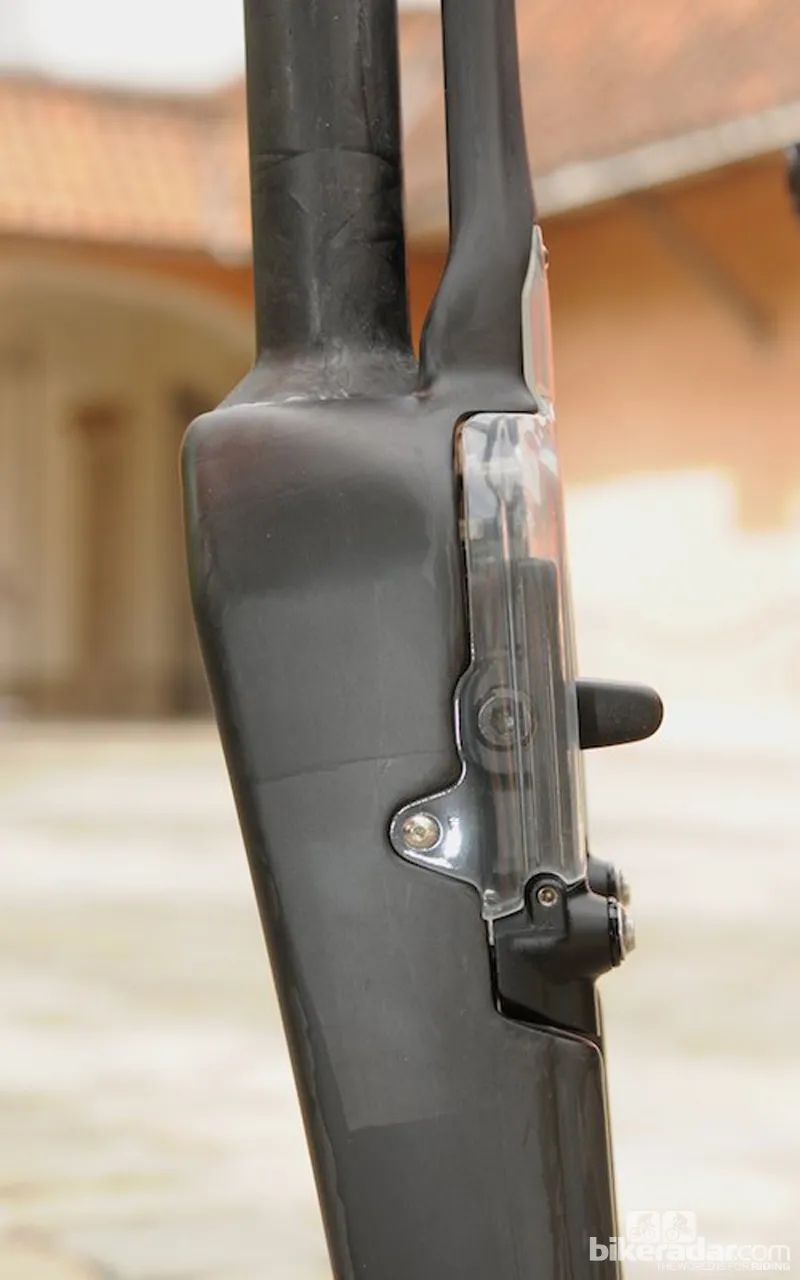
A side view of the fork and the 'structural' - a key word for the UCI - brake cover
